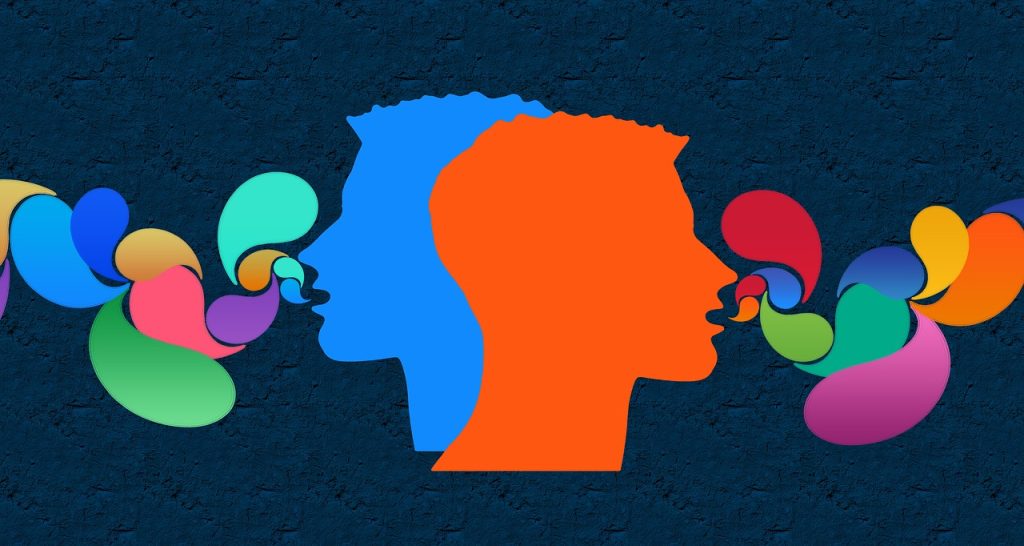
Articles & webinars
The hidden influence of culture: communication

Posted April 2022
In this series I explore work-related topics where culture shows its hidden influence.
Communicating with people from different cultural backgrounds is probably the most unhidden aspect of the influence of culture. When traveling to other countries, or when meeting people from other countries at work, finding a way to communicate is the first problem we need to solve.
Read more about different communication styles, miscommunication in meetings, presentations, decison making and in virtual communication and how we can learn to be more effective in our intercultural encounters.
Read this full article here.
The hidden influence of culture: groups and teams

Posted November 2020
In this series I explore work-related topics where culture shows its hidden influence.
In this article on teams and groups I propose a new team development model to help teams consisting of members representing different orientations: exploration, appreciation, reconciliation and separation.
Read more to find out how team composition influences the meaning of teams and how they develop.
Read this full article here.
The hidden influence of culture: trust

Posted August 2020
In this series I explore work-related topics where culture shows its hidden influence. This week’s topic: trust.
Trust building is an art that is not made easier by group diversity. So how come we tend to think that diversity makes our teams perform better? Because once you overcome the trust barrier between different orientations, you can tap into a source of creativity working with people who have different perceptions of success, intelligence, freedom and safety. Read more to find out about the hidden influence of culture in building trust and mistrust.
Read this full article here.
The hidden influence of culture: motivation

Posted July 2020
In this series I explore work-related topics where culture shows its hidden influence. This week’s topic: motivation.
Various researchers have tried to find universal categories of motivation. Yet what is motivating to one may actually be demotivating to another. I am convinced that the search for universal categories of motivators has been overlooking the influence of shared attitudes.
Read more to find out how motivation influences behavior at work and how we can be more effective at influencing job performance.
Read this full article here.
The hidden influence of culture: personality

Posted July 2020
In this series I explore work-related topics where culture shows its hidden influence. This week’s topic: personality.
The tendency to attribute behavior to stable, universal traits is inherently biased. It assumes a stable individual disposition to act in certain ways, independent of social or physical context. If people think so differently about personality and the role it plays in our social life, we should take this into account when we make assumptions about sources of behaviors of others. This has implications for organizational systems such as recruitment and reward systems.
Read more to find out how personality influences behavior at work.
Read this full article here.
The hidden influence of culture: attitudes

Posted July 2020
In this series I explore work-related topics where culture shows its hidden influence. This week’s topic: attitudes.
Our attitudes guide our behavior and our intentions. Our own behavior is often guided by our expectations of other people’s likely response to ours. Our ability to predict other people’s attitudes strongly influences our interpersonal effectiveness.
Generally speaking, people do quite well at predicting other people’s attitudes, as long as they belong to the same in-group. However, when trying to predict attitudes of out-groups, prejudice and stereotypes prove to be pour counsellors.
Read more to find out how attitudes influence behavior at work.
Read this full article here.
The hidden influence of culture

Posted June 2020
It takes some time and training to recognize the manifestation of culture in your organization, yet all our behavior is essentially cultural. This series will help you see the invisible. I will explore work-related topics where culture shows its hidden influence.
Read this full article here.
Breaking free from our mental prison
Beyond the Model of Freedom: a theory of meaning

LinkedIn post, March 2019
As the Model of Freedom was assembled and not invented, its evolution is never finished. This article reviews how the theory of meaning (Van Dinten & Schouten) can add depth to the Model of Freedom, and how the combination of these theories can teach us how to break free from our mental prison.
Read this full article here.
Webinar GLobal Leadership and Organizational Behavior Effectiveness (in Dutch)
Duur: 20 minuten
Het GLOBE onderzoek heeft onder meer onderzocht of er leiderschapsstijlen bestaan die universeel worden gezien als effectief en acceptabel. Het blijkt dat dit niet zo is. Alleen enkele attributen lijken universeel te worden geaccepteerd en gezien als effectief, bijvoorbeeld eerlijkheid en vertrouwen. Maar is vertrouwen een universeel begrip, in zowel betekenis als gedrag? Dat is ten zeerste de vraag. Dat betekent dat je als leider, met je eigen voorkeursstijl, er maar beter vanuit kunt gaan dat jouw stijl niet overal en altijd effectief zal zijn. En dus moet je leren…balanceren.
Deze video is een opname van de webinar van 18 maart 2021 over cross-cultureel leiderschap. De webinar was toegankelijk voor alle deelnemers aan het GLOBE2020 project die de vragenlijst voor het GLOBE Netherlands team hebben ingevuld. Hiermee bedankten wij namens het Nederlandse onderzoeksteam alle deelnemers.
– The GLOBE 2020 Country Co-Investigators
Danaë Huijser
Tina Davidson
Christopher Schlagel
Peter Gillies
Vergroot synergie voordelen dankzij cultuurverschillen

LinkedIn post, July 2015
Synergie is bij de meeste overnames het toverwoord. Het doel is financiële voordelen te behalen door efficiënt samen te werken. De financiële voordelen kunnen echter volledig verdampen wanneer fuserende partners andere aspecten van een fusie links laten liggen. Verschillende onderzoeken claimen dat tussen de 40 en 80 procent van geanticipeerde synergie voordelen bij fusies en overnames niet worden gehaald door cultuurverschillen. Dit is lastig te meten, maar al zouden we van het laagste cijfer uitgaan, dan loont het op zijn minst de moeite het onderwerp serieus te nemen. Een fusie is al lastig genoeg binnen landsgrenzen, cultuurverschillen over landsgrenzen maken het nóg lastiger.
Read this full article (in Dutch) here.
